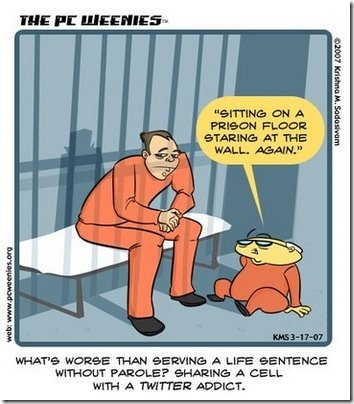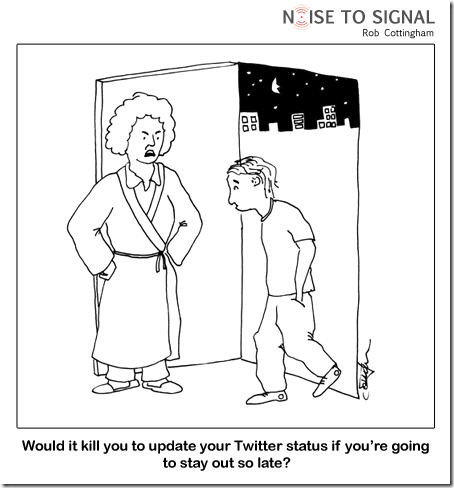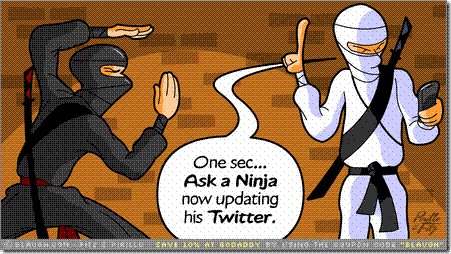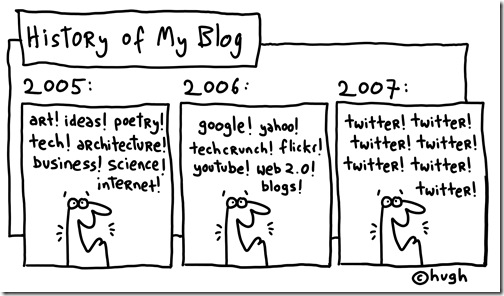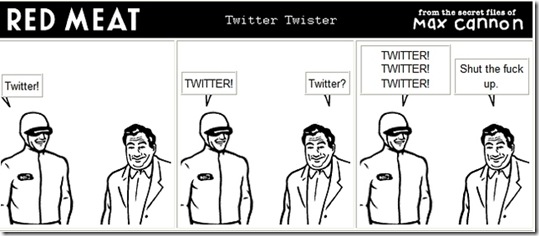Tag: Twitter
Leadership Class (Y52.3300.001)
 I am teaching a Leadership class at New York University’s School of Continuing and Professional Studies that begins tomorrow. The course is an elective course in the Strategy and Leadership Concentration toward an M.S. in Management and Systems through the Management and Information Technology Program within the Division of Programs in Business.
I am teaching a Leadership class at New York University’s School of Continuing and Professional Studies that begins tomorrow. The course is an elective course in the Strategy and Leadership Concentration toward an M.S. in Management and Systems through the Management and Information Technology Program within the Division of Programs in Business.
While the course description is already online for anybody to see here, I thought instead I will lead by setting an example of sharing text references. Academics (and even scholar-practitioners, which is a title I use for my own work) do not easily and publicly share what materials they are using for a certain course, so I thought I will share my required and recommended texts, specifically to assist others who may be building such a leadership course for the first time and are looking for appropriate texts.
Required:
- Bass, B. M. & Riggio, R. E. (2006). Transformational Leadership (2nd ed.). Mahwah: Lawrence Erlbaum Associates, Inc. ISBN 0805847626
- Collins, J. (2001). Good to Great. New York: Collins. ISBN 0066620996
- Northouse, P. G. (2007). Leadership: Theory and Practice (4th ed.). Thousand Oaks: Sage Publications. ISBN 141294161X
Recommended:
- Kouzes, J. M. & Posner, B. Z. (2007). The Leadership Challenge (4th ed.). San Francisco: Jossey-Bass. ISBN: 0787984914
- Marquardt, M. J. (2005). Leading with Questions: How Leaders Find the Right Solutions By Knowing What To Ask. San Francisco: Jossey-Bass. ISBN 0787977462
I am expecting great things from my students in this course, and expect to share a bit about the experience between here and Twitter.
TweetWheel – Visual Twitter Relationships
Will the useful and interactive Twitter applications never stop? Thanks to the wonderful Twitterholics website, I just discovered TweetWheel.
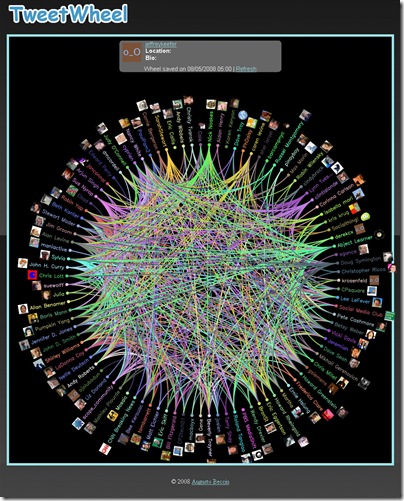 This online application analyzes all of the followers we have and then identifies which of them in turn follow one another. In other words, this visually shows relationships between those people I follow. Bring the cursor over each name, and colored lines appear that link them to one another based on their relationships. While some relationships I know, a number of them were a surprise. As followers and relationships are dynamic while the TweetWheel takes a snapshot in time, you may want to generate this repeatedly. One word of caution, depending on the number of people you follow, this can take some time. As I have recently added a number of new people I follow (from the Connected Futures CP2tech01 workshop), this program helps me understand those people’s relationships a little better.
This online application analyzes all of the followers we have and then identifies which of them in turn follow one another. In other words, this visually shows relationships between those people I follow. Bring the cursor over each name, and colored lines appear that link them to one another based on their relationships. While some relationships I know, a number of them were a surprise. As followers and relationships are dynamic while the TweetWheel takes a snapshot in time, you may want to generate this repeatedly. One word of caution, depending on the number of people you follow, this can take some time. As I have recently added a number of new people I follow (from the Connected Futures CP2tech01 workshop), this program helps me understand those people’s relationships a little better.
Click my TweetWheel image to see it full-size.
What community-building or other uses can you imagine for this?
Twitter Invitation to a Discussion Group
Well, I did not necessarily discover this on my own, as it has been a recent topic of discussion on one of the discussion groups I follow, Online Facilitation. ![]() One of the members of the group sent a Twitter follow request / email invitation to the mailing list itself, which in effect invited anybody and everybody in the community to click the link to then follow this person via Twitter.
One of the members of the group sent a Twitter follow request / email invitation to the mailing list itself, which in effect invited anybody and everybody in the community to click the link to then follow this person via Twitter.
Brilliant idea, I thought–how better to communicate with a group of people with similar interests than by sending a Twitter invite to the entire group! If we share this interest in online facilitation, as I thought about it, then perhaps sending this sort of Tweet to everybody in the group may in fact move the communication to a more public area (Twitter) , where people can continue to connect in another forum. Isn’t this what facilitating community is all about?
However, the issue of this being discussion board spam or an accident has also been raised. Here, I thought it was a brilliant community outreach (there are many people on the list I do not know nor have I ever met or seen) that tried to bring people together, while others perceived a similar outreach as more discussion group clutter. I know I usually do not actively seek people out on Twitter or any of the other social media (a bit shy, fear of rejection, or desire to be unobtrusive?), so when I get these invitations from others who have some similar interests, I am usually appreciative of their efforts. That this came in a spam-like blanket that does not offer any immediate benefit for the current community (Twitter conversations would, of course, occur outside the current community) is also a very real concern. This is like sending donation emails, self-promotion communications, or even adverts to a discussion group, most of which are frowned upon. What surprised me the most was how little discussion this really did generate at all.
That once again Twitter (I Tweet here, by the way) is used in an unintended way that sparks discussions that previously did not exist is a testament to how significant I really believe this technology to be.
What do you think?
How to Use Twitter in Higher Education
I decided that I will list my Twitter name on the syllabus for the class I am teaching that begins tomorrow, Project Management for Training. I decided to do this after reading an article in the Chronicle, Forget E-Mail: New Messaging Service Has Students and Professors Atwitter. As my class is in a continuing education certificate program, I am not sure how or what I will do with it, but I know nothing will happen unless I take the first steps.
While my class will only touch on technology, I am interested in listing the Twitter address and seeing where it may lead. Has anybody out there effectively used Twitter in an adult-oriented, non-technology focused class?
